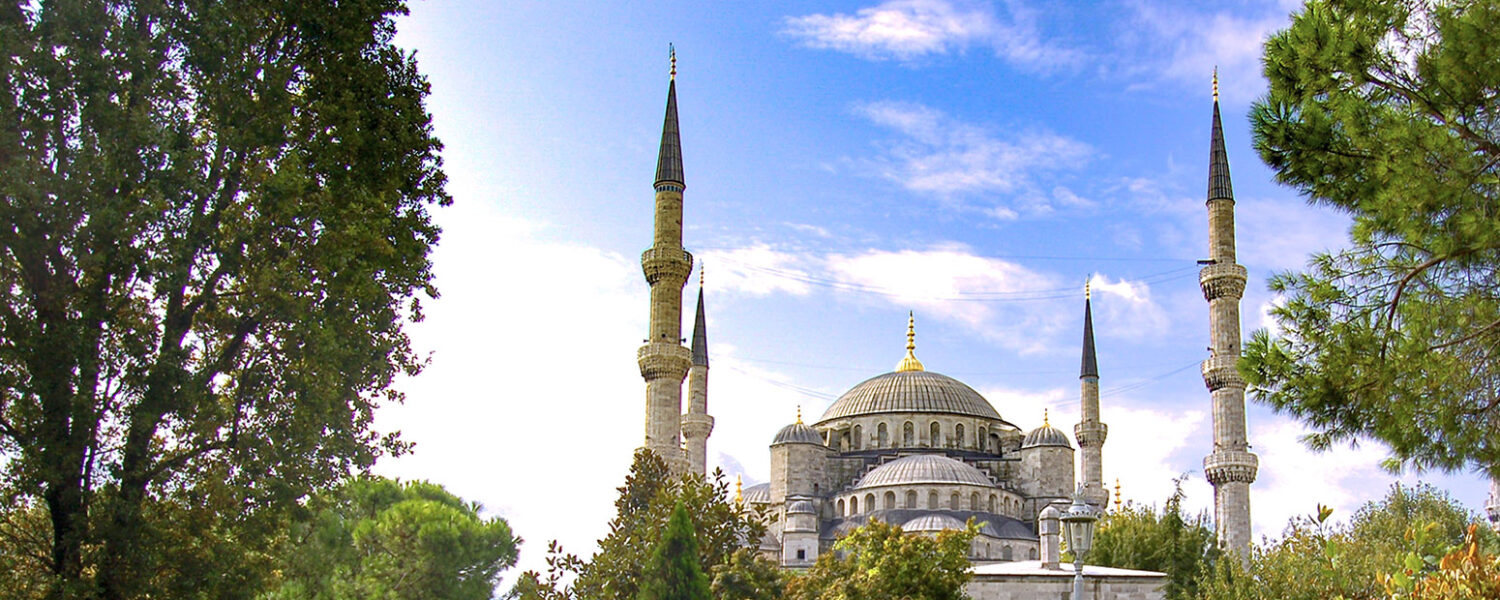The Blue Mosque, also known as the Sultanahmet Mosque, is indeed a symbol of Islamic architecture and an iconic landmark in Istanbul. It is a testament to Turkey’s impressive past and lively present. The majestic Blue Mosque’s breathtaking domes, towering minarets, and intricate Iznik tile work, which exudes a truly regal elegance, captivate everyone who enters.
The Blue Mosque was created by the architect Sedefkar Mehmet Aga during the reign of Sultan Ahmed I and is located in Istanbul’s historic Sultanahmet area. It is a remarkable example of late classical Ottoman architecture and was constructed between 1609 and 1616.
Sultan Ahmed I’s history is interrelated with that of the Blue Mosque. The Sultan commissioned the construction of this magnificent architectural masterpiece in an effort to construct a mosque that would compete with the nearby Hagia Sophia. The famous Hippodrome, the hub of public life during the Byzantine era, and Sultanahmet Meydani (also known as Sultanahmet Square) are close to where the mosque was constructed. Both the exterior and interior of the Blue Mosque offer stunning sights. Its six rising minarets and a cascade of domes greet you from a distance. Over 20,000 hand-painted blue tiles that gave the mosque its name are found inside, adding to the opulence. Its Mihrab, Minbar, and the upper-level galleries decorated with intricate blue paintwork are additional eye-catching features. The mosque’s incredible arrangement of smaller domes surrounding its 43-meter-tall central dome is a wonder in and of itself.
Is there still prayer at the Blue Mosque?
The Blue Mosque is used for prayer five times per day and is still in use as a mosque.
Why is it referred to as the Blue Mosque?
The name is derived from the interior walls’ 20,000+ hand-painted blue tiles.
Are visitors who aren't Muslims welcome?
Outside of the times of prayer, non-Muslims are welcome to visit, though some areas are only accessible to worshipers.
What distinguishes the Blue Mosque from other mosques?
In addition to its stunning architecture, the mosque is distinctive because it was the first to be built with six minarets, a design choice that generated a lot of controversy during construction.
How much does it cost to enter the Blue Mosque?
Although entry to the Blue Mosque is free, if a visitor does not have proper clothing for entry, they may be charged for temporary clothing.



There are certain regulations that visitors to the Blue Mosque must follow. It is necessary to wear modest clothing, including long pants for men and long sleeves and headscarves for women (available at the entrance if needed). Besides all that, shoes must be taken off before entering, and silence must be observed while inside.
Visiting Tips
An excursion into Istanbul’s history, culture, and spirituality is truly what it is like to visit the Blue Mosque. It is an absolute must-see due to its alluring beauty and peaceful atmosphere.
Cover photo (retouched) by Hans-Jürgen Weinhardt


